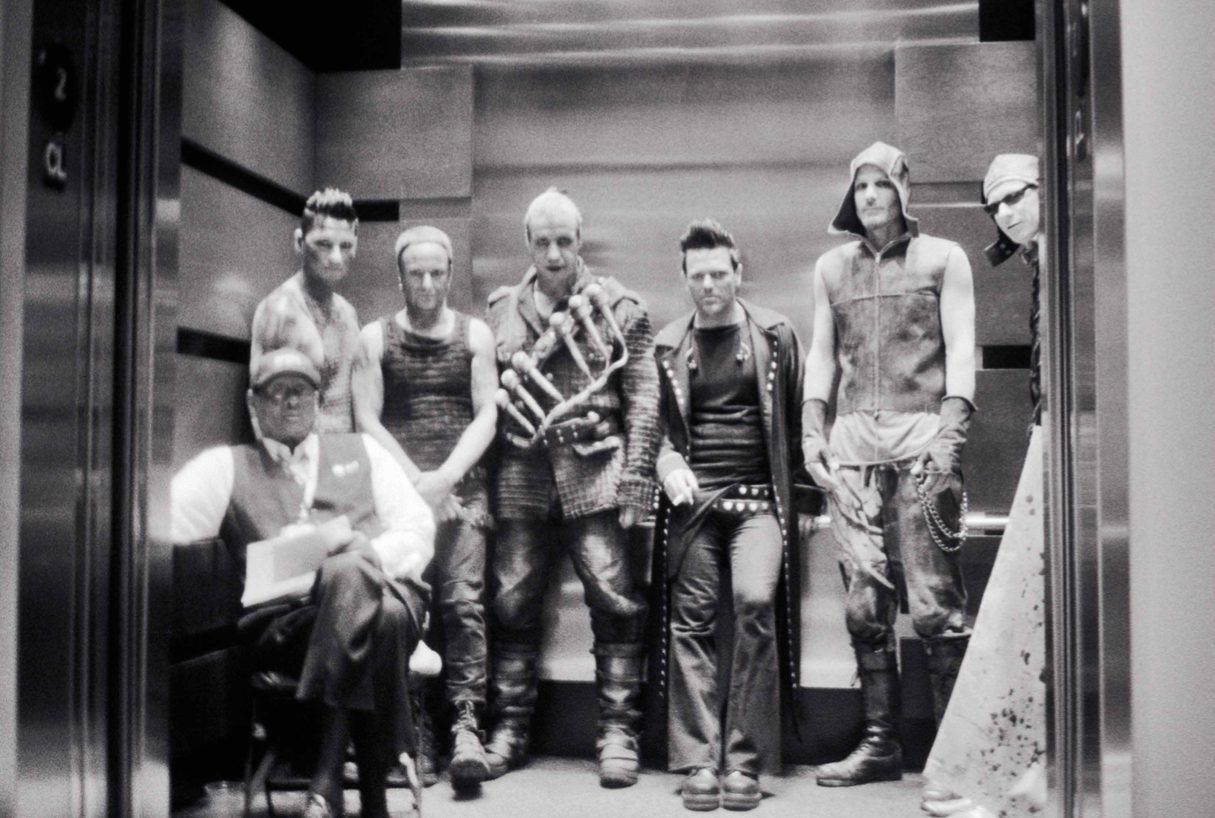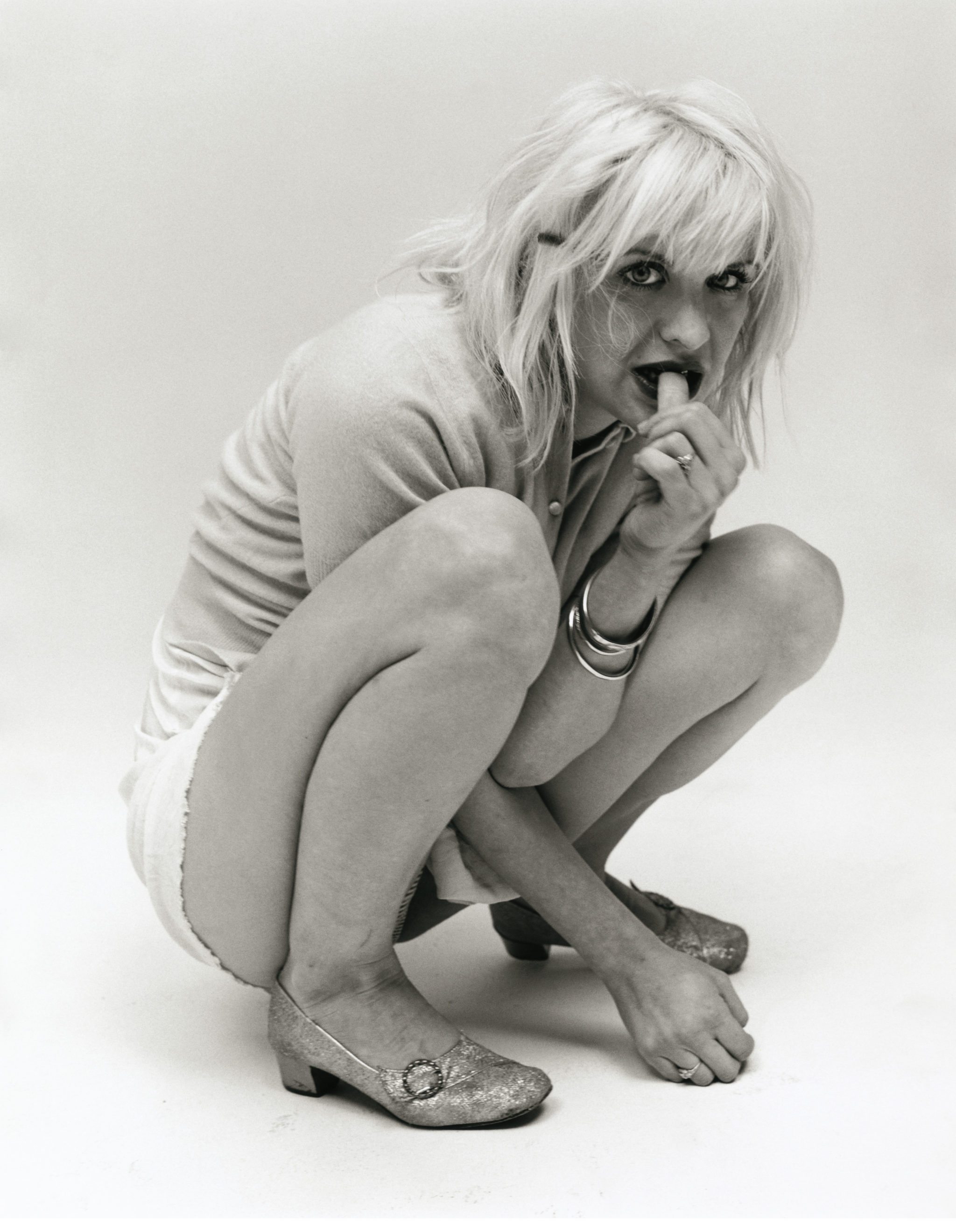SMASHING THE GUITAR: GUSTAV METZGER
|WOLFGANG KRAUSHAAR
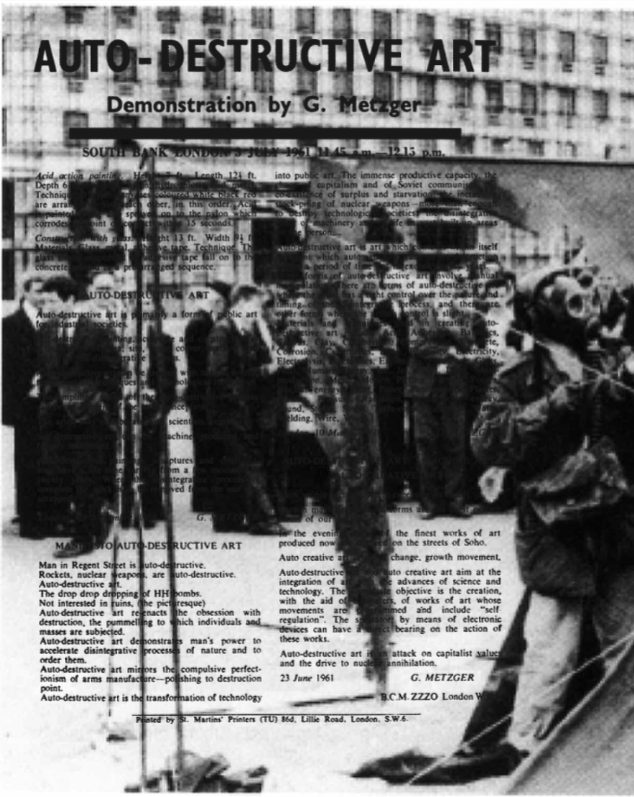
On the Idea of the Auto-Destructive Art Work and Its Implications for Rock Music
A CONFLICT AT THE MONTEREY FESTIVAL (1967)
June 18, 1967, Monterey, California. A bitter argument between two rock bands breaks out backstage at the first big open air concert. The point of contention: who will appear after whom. The Who don’t want to go on- stage after the Jimi Hendrix Experience and vice versa. Neither of the two heads of each band, Hendrix and Pete Townsend, will budge. But it’s not vanity that has each holding his ground. Both bands plan a final climax to their acts, a grand finale that can’t be topped for sheer drama: they want to smash their own instruments into their equipment. Obviously, the same act can’t be repeated in front of the same audience twice.
To finally put an end to the standoff, John Philips of the Mamas and the Papas takes out a coin. Hendrix loses, but nevertheless swears to pull out all the stops, a promise that is to lead to one of the most bizarre and talked about performances in the history of rock music. The Who go on first. As planned, they leave their equipment in shambles on stage. The audience goes nuts. But they have no idea what’s coming their way next. Rolling Stones guitarist Brian Jones introduces Jimi Hendrix who walks on in red silk pants, a billowy, fringed shirt, a feather boa and an Afro worthy of a diva. Most of the people in the crowd are from Haight Ash- bury, Ground Zero of San Francisco’s hippie scene. As promised, Hendrix pulls out all the stops. With even more virtuosity than usual, he plays “Hey Joe”, “Foxy Lady”, “Can You See Me?” and the elegiac “The Wind Cries Mary”. He’s got the audience under his thumb. Mama Cass and Janis Joplin are thoroughly enchanted. Then Hendrix pulls off his feather boa and launches into “Wild Thing”, his last piece. He works his Fender Stratocaster with his arm, his teeth and his tongue, he plays on his back, under his knees, he rides his guitar across the stage and does somer- saults with it. Then he violently thrashes the amplifier and, at the same time, simulates a sexual act. Finally, he rams the neck of the guitar into one of the speakers, pulls it back out again and throws the smashed instrument to the stage floor. The other two musicians accompanying him, Noel Redding on bass and Mitch Mitchell on drums, keep on playing. Hendrix kneels down in front of his guitar, squirts lighter fluid on it and sets it on fire. The flames shoot up as Hendrix grabs the guitar by the neck and pounds the burning instrument on the stage. As the sound collage of what’s left of the song disintegrates, he tosses the remains of the guitar out to the crowd.
The audience is in shock. The initial enthusiasm has turned to dismay. Most of the crowd simply stares ahead in a daze as if they can’t fathom what’s just taken place. After a few moments, a hesitant applause breaks out. As the band leaves the stage, one tumultuous scene follows another. Nico, the Velvet Underground singer from Germany, rushes over to Hendrix and smothers him in kisses. Approving comments are heard from the murmuring throng of concert organizers, technicians, the press, fans and other musicians. No one could have realized that this performance was, among other things, an allegory for the meteoric rise and fall of a megastar. Jimi Hendrix was to become an absolutely unique icon in the history of rock and came onto the scene just as it was beginning its hero-making, self- destructive phase. The next day, the Los Angeles Times wrote that when the black singer and guitarist left the stage in Monterey, a rumor had become a legend. The realization was beginning to sink in that the magnificent virtuosity of the guitar playing, the movement of the body that itself bordered on artistic expression, the patterns of sounds arising from alienating echo and feedback effects and the staged orgies of de- struction were a direct attack on the harmonic sweetness of pop music. Hendrix, an American, first began his career as an extraordinary musici- an in the innovative music scene of London, blending elements of blues, rock and jazz in entirely new ways. Discovered in New York by the ex-Yard-bird Chas Chandler, he had, within just a few weeks, forged his own style and, with his furious riffs, caught the attention of the most talented of the British guitarists such as Jeff Beck, Eric Clapton and Pete Townsend. Most of their reactions were similar to that of Mike Bloomfield, a young and eager American guitarist. Bloomfield compared his first experience of a Hendrix concert to an encounter with an extraterrestrial being: “Hydrogen bombs exploded, remotely guided missiles shot through the air. I can’t even begin to describe the sounds he got out of his instrument … It hit me in the face and I didn’t even want to touch a guitar again for a year.” The sheer outlandishness of the metaphors hint at how violent, explosive and threatening the Hendrix sound seemed to audiences and especially many of his fellow guitarists.When, at Woodstock in August 1969, Hendrix deconstructed “The Star- Spangled Banner”, the US national anthem, turning it into a countercultural complaint with unmistakable elegiac and melancholic undertones, he once again reached for the motif of destruction and integrated it into what is surely his most notable instrumental work. This time it wasn’t just the guitar that was destroyed but also one of the most important of national emblems, an unequivocal protest against the war in Vietnam. For all the obvious virtuosity, the name Hendrix is inseparable in rock hi- story from the drive for destruction. The audiovisually shocking performance at Monterey, which many requested to see repeated, often with- out success, had become a sensational image of the rock idol lodged permanently in the minds of many. His “Smash Hits”, the title of one of his albums, were associated with an image that propagated a set of rock music clichés dominated by psychedelic effects, orgies of destruction and vandalism. But it wasn’t Jimi Hendrix who introduced rock to the smashing of the guitar. It was his rival at Monterey.
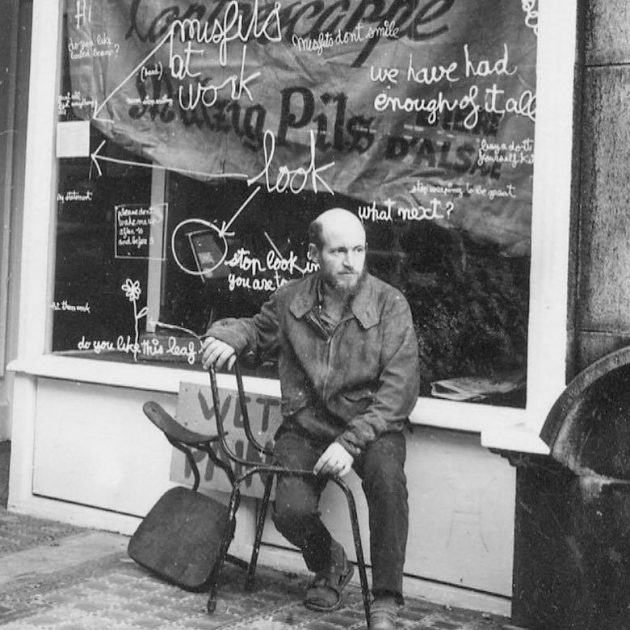
TOWNSEND’S INSPIRATION
Like more than a few other accomplished British rock musicians, Pete Townsend began his career at an art academy. He was especially interested in the avant-garde and it was anything but a coincidence that, in December 1962, he attended a lecture at the Ealing School of Art en- titled “Auto-Destructive Art, Auto-Creative Art: The Struggle or the Machi- ne Arts of the Future”. The speaker was an artist known only to a few small circles. Fifty slides were shown and elaborated on. One made quite an impressi- on on the young art student. It depicted an action by a Japanese artist, Saburo Murakami, a member of the Gutai Group, founded in 1954 in Osaka. The slide showed Murakami, his arm outstretched, his hand bal- led up in a fist, jumping through a paper wall. The pose struck Townsend. There would be few appearances by The Who later on that would not feature Townsend bopping around on stage with his arm raised. This dramatic mannerism would become one of the trade- marks of the eccentric band from the mod scene. There are several legends surrounding the origins and eventual development of that moment in Who performances when the instruments would be smashed. One of them goes like this: “While they were performing at the Marquee, the neck of Townsend’s guitar broke against the low ceiling when he jumped. It didn’t seem to matter much to the audience, and this infuriated Townsend, so he smashed the damaged instrument to pieces. Excited, Keith Moon knocked over his drum kit and started mutilating it. The crowd liked this quite a bit; the reaction was overwhelming, and the famous Who stage show was born.”
Townsend himself tells quite a different story. In an interview, he refers to the lecture at the Ealing School of Art and explains: “I was doing my first gig with The Who and took it as an excuse to smash my new Rickenbaker that I had just hocked myself to the eyebrows to buy. I really believed it was my responsibility to start a rock band that would last only three months, an auto-destructive group. The Who would have been the first punk band except that we had a hit.” Afterwards, it wasn’t destruction but auto-destruction that was the overriding motif. The Who was a band with a sell-by date built into its conception. The influence of the idea of an auto-destructive art work on Town- send is clear; it must have seemed an exemplary concept on which to found a genuine rock band of his time.
METZGER’S IDEA OF AUTO-DESTRUCTIVE ART
The inspiration for Townsend’s deconstruction scenarios was the artist Gustav Metzger, 36 years old at the time, a German-Jewish immi- grant who had lost most of his relatives at Auschwitz and other concentration camps. Metzger, to whom the Who guitarist would repeatedly refer as his “teacher,” had made a name for himself particularly with a number of manifestos on auto-destructive art. It’s not just in Britain that he is now known as a founder of this seemingly paradoxical concept. In his first published manifesto, “Auto-destructive Art”, dated November 4, 1959, he wrote: “Self-destructive painting, sculpture, and construction is a total unity of idea, site, form, colour, method, and timing of the disintegrative process … Auto-destructive paintings, sculptures and constructions have a life-time varying from a few moments to twenty years. Total conception: When the disintegrative process is complete, the work is to be removed from the site and scrapped.”
Metzger thought it was important to show such art works in public spaces and, whenever possible, outdoors. The idea of the isolated artist working in his studio was for him sheer horror.Anyone should be able to have access to the art work without having to pay for it. The art work must not be allowed to become an object for the market; it cannot be bought or sold. Metzger would later emphasize again and again that, for him, November 4, 1959, was a point of no return. Since that day, he never ceased thinking about the idea of auto-destructive art. Just a few months later, he presented his second manifesto. Published on March 10, 1960, the “Manifesto Auto-Destructive Art” explicitly addressed the nuclear arms race: “Auto-destructive art reenacts the obsession with destruction, the pummeling to which individuals and masses are subjected. Auto-destructive art demonstrates man’s power to accelerate disintegrative processes of nature and to order them. Auto-destructive art mirrors the compulsive perfectionism of arm manufacture-polishing to destruction point. Auto-destructive art is the transformation of technology into public art… Auto-destructive art is art which contains within itself an agent which automatically leads to its destruction within a period of time not to exceed twenty years.”At the end of his manifesto, he lists materials and techniques to be used in the production of auto-destructive art. five days later, the Daily Express published Metzger’s first model of an auto-destructive sculpture. On June 22, 1960, he made his first presentation in the Temple Gallery in London. With a brush, he painted a web of nylon which shortly disinte- grated before the eyes of the audience. He associated his auto-destruc- tive act with an “aesthetic of disgust.”
The demonstration that sparked the most public reaction took place on July 3, 1961, at the South Bank in London. Wearing a gas mask, he sprayed hydrochloric acid on three nylon screens of black, red, and white, stretched over a construction of metal pipes. Bit by bit, the material dissolved, falling in strips before it had disintegrated completely. The entire action didn’t take longer than half an hour.
Just a few days before, Metzger had published his third manifesto, “Auto-Destructive Art, Machine Art, Auto-Creative Art.” As the title im- plies, for the first time, he explicitly establishes a relationship between auto-destructive and auto-creative art. The goal is to create works of art with the help of a computer. The movements of these works would be programmable and self-guiding. He closed with a formulation of his political credo: “Auto-destructive art is an attack on capitalist values and the drive to nuclear annihilation.”
On October 7, 1962, during the Cuba Missile Crisis, he presented his fourth manifesto entitled “Manifesto World.” It begins with the darkly apocalyptic words, “everything everything everything ever ything a world on the edge of destruction. Objects become valuable and material honorable. That is an art form for artists. The masses recognize modern art fifty years after it is created. The art form won’t survive any such delay since it’s not likely that in fifty years there will be a world in which to practice it.”
A fifth manifesto on “Material and Decay” attempted to address more precisely the role of the activity of decay in the auto-destructive process. It appeared on July 30, 1964, and was the last in Metzger’s series.
THE HISTORICAL CONTEXT: METZGER’S BIOGRAPHY
Anyone taking a closer look at the man who called widely accepted notions of art into question so radically in the early sixties can’t help but be struck by how closely related his life and work have been. His attempts to reclaim historical legitimacy for the work of art are founded in the question of whether or not it is possible after Auschwitz and Hiroshima to create aesthetic objects whose form has not already been impugned by the course of history. The depth and breadth of his project is made clear in the paradox inherent in the desire to create an art work that destroys itself, in the integration of the potential for destruction in modernity into the object in order to set into motion a process that successively dissolves the object and, in this way, demonstrates the temporality of its existence. This dissolution of the aesthetic object reflects the existential threat to the artist who has survived Auschwitz but can never be free of it in his “after life,” the experience of shaking off the threat to one’s own life even as he believes to have recognized his own kind in that threat. He seems subject to some perpetual impulse to repeat in the aesthetic sphere what has been burned into his skin in his own life.
In light of Adorno’s dictum that it would be “barbaric” to “write a poem after Auschwitz,” some artists faced the question of whether or not it would be morally feasible to carry on making art after the Holocaust. For Metzger, who evidently dealt with this challenge again and again, there is a clear answer, one bordering on an activist gesture: “For me, the answer to the question, ‘Can there be poems after Auschwitz?’ is not just, ‘Yes, there can be!’, but rather, ‘There must be!’ – in order to face this horror head on.” His idea of the auto-destructive work of art is meant to be neither representative nor reflexive nor symbolic; it is far more an attempt to win art back from the terrain of Auschwitz and Hiroshima. Only once Metzger has integrated into the art work the hideous potential for destruction and threat revealed so clearly in the twentieth century — this at least is his hope — does he believe he can free it from its involuntarily ideological tendencies and to realize its inexorable autonomy in its production.
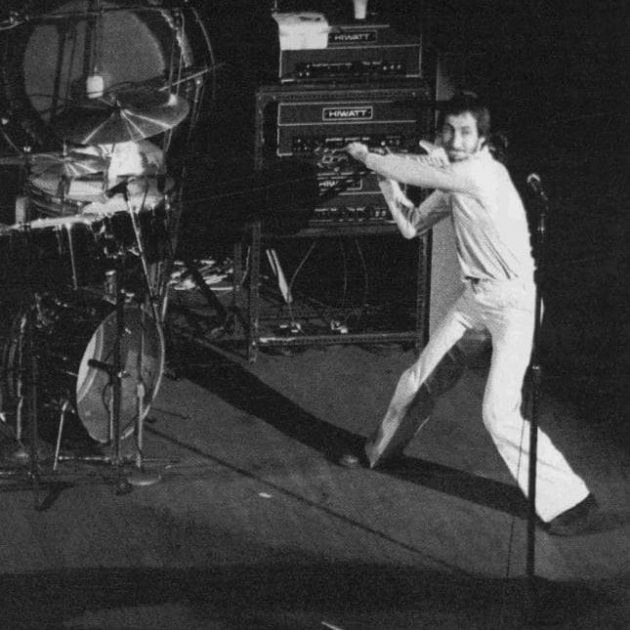
THE “DESTRUCTION IN ART SYMPOSIUM” IN LONDON (1966)
Metzger is undeniably a loner, both as a person and as an artist. In a certain sense, he is a modern nomad, agile and full of ideas. He is the first to direct his artistic work to the motif of destruction with such unmatchable rigor. But he is hardly the only one. The art of destruction plays a remarkable, and in some ways, even spectacular role in the avant-garde movements of the sixties. Among the most important of these artists is surely Jean Tinguely, the Swiss artist who set a self-destructing machine into motion in the Sculpture Garden of the Museum of Modern Art in March 1960 bearing the title “Homage to New York”. Other examples include Lucio Fontana’s slashed canvases, Yves Klein’s fire painting, Andy Warhol’s car crash paintings, Niki de Saint Phalle’s shooting actions, Yoko Ono’s slashing of her own clothes as she was wearing them, Wolf Vostell’s happenings, Günther Brus’s rituals of self-injury as well as the extremely ambivalent mutilations of Wolfgang Nitsch and the other Viennese action artists. Metzger followed these parallel and, at times, competing currents from a distance, but sympathetically and always closely. When he came across the documentation “Happenings, fluxus, Pop Art, Nouveau Realisme,” published in 1965 by the Rowolt Verlag, he had the idea of organizing an international conference on the art of destruction. He took the initiative, founded the committee, took on the role of secretary and began preparations in the spring of 1966. He gathered most of the names of the participants from the book. By the autumn of 1966, the conference was set to go.
On September 9, the “Destruction in Art Symposium” was opened at the Africa Center on King Street in London. It lasted for three days. Between 120 and 150 people took part. After the symposium was opened by Gustav Metzger, Ivor Davies, Dom Sylvester Houédard and Jean-Jacques Lebel spoke on the first day on various aspects of auto-destructive art. Anti-Vietnam War flyers by George Maciunas announcing “U.S. Surpasses all Nazi Genocide Records!” were distributed. Based on available statistics, Maciunas’s conclusion was that in southeast Asia, the destructive effects brought about by the US army were greater than those of the German army in the Second World War.
The second day began with a talk by Metzger as well: “The Scientific Destruction of Science and Technology.” Lectures by John Latham, Garry A. Jones and Anthony Scott followed as well as a message of greeting by Simon Vinkenoog in the name of the Dutch Provo movement. The evening event led by Lebel met with contention from only the Viennese action artists who were appearing outside their own country for the first time. The art critic Peter Weibel spoke on “Film, Division of Labor and Art” before Otto Mühl and Günther Brus — departing from the program of strictly reading from texts — carried out various phonetic actions. The group’s performance, highlighted by the projection of several films by Kurt Kren of Otto Mühl’s actions, was brought to an end by Hermann Nitsch.
On the third and last day, action artist Ralph Ortiz spoke, as did Joseph Berke, who was part of the circle surrounding psychologist Ronald D. Laing, before Juan Hildago and Robin Page held a debate with Ortiz on the topic “To kill or not to kill.” The closing event led by Ivor Davies was opened with a lecture by Guy Pro-Diaz who had aroused interest in his experiments with explosive materials. Afterwards, Japanese action artist Yoko Ono and her first husband, Anthony Cox, read passages from her book “Lecture in the Dark,” dancer Barbara Gladstone spoke on destructive aspects of ballet and Biff Stevens talked about his Pneumatic Environment set up in Battery Park. The symposium closed with a complete review by John Sharkey. The symposium received heavy coverage in the national and international press, and not just because the protests against the steadily escalating war in Vietnam provided a stimulating backdrop.
The art of destruction, and specifically, the motif of the destruction of a guitar, was playing a role at this time in a film by Italian director Michelangelo Antonioni. “Blow Up,” shot in London in the summer of 1966 and premiering in New York on December 18, immediately became a cult hit, and in May 1967, it was awarded the Golden Palm at Cannes. The film tells the story of Thomas, a young photographer played by David Hemmings, who thinks he’s found clues to a murder he’s unintentionally captured in photos he’s shot in a park. The deeper he investigates, the more the question of what actually happened eludes him. Shot in the candy colors of contemporary pop culture, the film captures the mood of “Swinging London” more than any other. In one scene, Thomas walks through the alleyways of the city when his attention is attracted by an irresistible noise. He opens a door to a building to discover an audience entranced by the performance of a rock band, the Yardbirds, widely known as the talent factory of British rock. Eric Clapton, Jeff Beck and Jimmy Page, who would later become the lead guitarist for Led Zeppelin, all played for the Yardbirds. At the end of “Stroll On”, the bassist, for no apparent reason whatsoever, smashes his instrument. This arouses the audience all the more and they begin fighting over the pieces. But Thomas is quickest; he grabs the torso of the guitar, fights off the others and runs off with it. But it doesn’t take long for his interest in the fetish to wear off and he contemptuously tosses it away in an alley.
In Antonioni’s next film, “Zabriskie Point”, which premiered in New York in February 1970, the destruction motif plays another prominent role. Taking the campus revolts in California, the activities of the Black Panthers and the protests against the war in Vietnam as a backdrop, the film depicts the flight of a young man, Mark, and a young woman, Daria, through the desert. They end up in Death Valley, specifically, Zabriskie Point, which offers a view out over the valley. Mark is captured by the police and shot at the airport in Los Angeles, and in the final sequence, a villa on a cliff at the edge of the desert explodes before Daria’s eyes. Shot from one angle after another in slow motion, the explosion, set to the music of Pink floyd, sends the building, the furniture, a motley mix of decorative objects, refrigerators, television sets, books, bottles, glasses, cans, food — the entire world of consumption into an azure sky from which it all rains down again in a myriad of shattered pieces. The unique cloud of images and sounds set off by the explosion appears as nothing other than a symphonic final chord to the hybrid history of modern civilization. The everyday violence that was bleeding into the American suburbs at the time via the riots and unrest of the cities is transformed in Antonioni’s eye into an orgy of destruction of gigantic proportions.
THE AUTO-DESTRUCTIVE ART WORK
Art historian Justin Hoffmann tries to distinguish between this phenomenon occurring in the sixties simultaneously in several western nations and other forms of destruction in art. He draws a line between the iconoclastic, the artistic attack which usually takes the form in painting of a naturalistic depiction of destruction, and modern collage, which integrates, brings together found, broken, and discarded pieces of objects. The art of destruction, on the other hand, requires a new and heretofore unknown form: “The art of destruction fundamentally distinguishes itself from destructive acts (iconoclastic – collective, artistic attack – individual) which do not strive toward an artistic result as well as from art works which are not created at least in part by a destructive act on the part of the artist, but rather, merely depict destruction or refer in some way to something destroyed by another hand as an element of the work.” Therefore, what specifically sets the art of destruction apart is the point at which it somewhat paradoxically aims at something creative or at least something that transcends the purely destructive. This is to be especially applied to Metzger’s idea of the auto-destructive art work which he sought more and more to elaborate on by bringing in the dimension of the auto-creative.
Fundamental categories of auto-destructive art would be temporality, transformation and dematerialization. The radical temporalization of the aesthetic object is the basis on which all other attributes are determined. The permanent transformation of the form of its appearance is the unwritten law of its existence. And the dematerialization practically to the point of complete dissolution of the original object is what defines the essence of this contradictory concept of the art work. Naturally, the role of the artist does not go unaffected by the paradoxical foundations of the auto-destructive art work. The auto-destructive artist has little to do with the classical concept of a person who creates an aesthetic object, works with it and forms it. He is hardly an actor at all, instead stepping back from his usual role as much as possible. He is reduced to the role of an arranger, an impulse-giver. Even though he has created a construction which can set off a certain automatic movement, it is nevertheless not an object that expresses the intention of its creator in the form it takes on. What the auto-destructive art work shows in its final construction is nothing more than a framework of its procedural self-eradication. In this sense, the artist merely sets the art work in moti- on. It can move and take on unforeseen forms on its own.
THE “ART STRIKE” AND THE OTHER SIDE At the end of 1966, Metzger is increasingly in contact with British rock bands and the innovative scene they move in. Word has gotten around among rock stars that the artist with the outsider image has been experi- menting with the projection of liquid crystals which might make for a nifty visual effect at a rock concert. What might come off on the stage as a neat optical effect is, for Metzger, a logical progression of his idea of the auto-destructive work of art. He is especially interested in making the auto-destructive process visible. This is why, in 1963, during a presentation for the Bartlett Society at the University of London, he showed via a projector what happens when a strip of nylon stretched across the frame of a slide is dissolved in acid. These presentations evolve, becoming scenarios rich in imagery and effects, and eventually, monstrous visualizations that could already be called “light shows”.
The “liquid crystal projections”, for which Metzger gets help from an expert friend, are based on a relatively simple method: “The principle of the liquid crystal effect entails glass slides containing liquid crystals which are heated and placed in front of the lens of the projector outfitted with polarized filters. As the crystals cool, their colors change from black in the hottest stage, to gray and a mixture of just about every color in the spectrum — from green to yellow, purple, red, blue and pink — and swirling in endless, constantly changing combinations.” The attraction to such illuminations on the part of rock musicians is notable — they translate the experience of the sound into continually changing images drenched in color that conjure a dream world visually similar to being stoned.
If the motif of the smashing of guitars represents the auto-destructive aspect of Metzger’s concepts of contemporary art, then the liquid crystal projections definitely express the auto-creative aspect. The big moment arrives on the last two days of 1966. Metzger is able to present his liquid crystal projections as a “light show” at a big concert in the Roundhouse in London. The event begins with a performance by The Cream, the band comprised of Eric Clapton, Ginger Baker and Jack Bruce. Like no other British band, The Cream changes the listening habits of their audience, blowing apart the two-and-a-half minute format of the hit single with their blues-rock improvisations. Throughout the evening, Metzger projects his spectral colors on the wall behind the band to songs such as “Wrapping Paper,” “Cat’s Squirrel,” “I’m So Glad” and “I Feel Free.” The audience eats up the psychedelic effects. A whole new realm of imagination is opened up for the listening crowd through the creation of air bubbles melting into one another and separating, a sort of fluid mobile.
In contrast with the first evening, New Year’s Eve, naturally the most important of the two evenings, ran into technical problems. The Who were to follow Pink floyd at the climax of the concert, but when they stepped out on stage, three of the six projectors wouldn’t work. Parts of them are missing and Metzger suspects sabotage. It’s so dark on stage the band can’t be seen at all, so the house lights go up, completely blowing the effect of the remaining three projectors. Gone is the magical mood that was supposed to have been conjured by freely floating balloons of color. Townsend is furious at Metzger and calls him a failure. Metzger also has problems with the appearance of The Move, albeit for a different set of reasons. Their show begins with a car being driven onsta- ge with three scantily clad women sitting on top of it. When the women move off, several men carrying heavy hammers smash the car in a sort of martial fury. Metzger is completely against this act of destruction in which he sees his original idea of auto-destruction reduced to a cheap gag. Even though he’s invited to create more liquid crystal projections, he gives up these activities. Mark Boyle, a younger colleague, picks up where he leaves off and goes along for the international tour of the first British band to be labeled “psychedelic,” Soft Machine, which has taken its name from the William Burroughs novel.
Four years later, Metzger shows how one might address the automobile artistically. For the opening of the “Kinetics” exhibition in September 1970, he has a car drive through London with a transparent plastic box attached to its roof. The exhaust fumes of the car are led to this box via a hose. It doesn’t take long for the first ugly drops to form, and soon, the plastic box grows darker and darker. All that cars spit out that’s hazardous to human health and usually goes unseen becomes visible to the public eye. The car action is entitled “Mobile” and Metzger sees it as a sort of kinetic sculpture, a work he considers appropriate for the exhibition. He picks up the theme of the automobile as a destructive force on the environment again. When he is invited to take part in the documenta in 1972 in Kassel, he develops a project that can’t be realized. So he proposes another to be called “Stockholm June”. The description in the catalog explains: “Phase 1.120. Automobiles are set up, car to car, on a rectangular construction, 2.5 to 4 meters high, the sides of which are made of transparent plastic. The plastic is perforated with holes set apart at an equal distance in order to allow for the escape of the exhaust fumes. The fumes of all the cars will be led into the interior of the structure. The engines are to run from early morning to late at night. Phase 2. On the night of the 14th, all the cars are to be brought into the building and neatly lined up on the sides. The tanks are to be filled with gas and started. The structure is then to be covered and sealed with a plastic shell without holes. If, by noon on the 15th, the cars have not burst into flame, small bombs will be tossed into the sculpture.” Two photo montages appear next to this description. The project was never realized, neither in Kassel nor in Stockholm, for which it was originally planned. Another event goes sour on Metzger, driving him deeper and deeper into isolation. In the autumn of 1974, seven German artists, among them, Joseph Beuys, Hans Haacke, and Klaus Staeck, are presented in the exhibition “Art into Society / Society into Art”. In the catalog, Metzger calls for an art strike to last for three years:“Years without Art,1977–1980.” Because he fears that the subversive power of art might be neutralized by the increasing integration into the commercial market, he calls on his colleagues to stop all production and presentation of art works from 1977 to 1980. He also considers this call for a boycott, though it’s direc- ted at the art world, to be a pause in creative activity during which artists would think over and discuss the concepts behind their work. The incredibly naive call for a strike turns out to be a disaster. None of his fellow artists agree to it. Even those who sympathize with Metzger’s ideas don’t dare take such a radical step that would infringe on their already meager earnings.
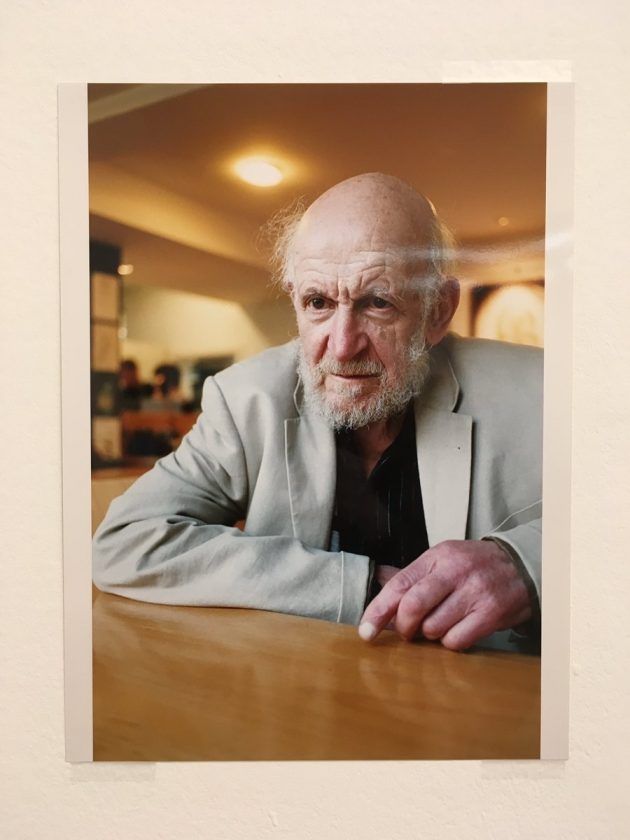
THE REDISCOVERY
Pulling himself out of the London scene during the eighties, Metzger was slowly forgotten. But then, in 1993, the Barbican Art Gallery in London opened its exhibition “The Sixties: Art Scene in London.” Included were documents related to the development of auto-destructive art. At the same time, some of the “Young British Artists” took an increasing interest in the progenitors of the art of destruction and saw in them something of a model for their own work. A few of the YBAs, led by Damien Hirst, openly declared Metzger their “Dad.”
In a portrait, the journalist Nicola Kuhn writes admiringly: “The small, almost gnome-like man remains a phenomenon. For decades, no one’s asked after him; ‘whereabouts of the artist unknown’ is what’s always written in the catalogs. But suddenly, as in the sixties, he’s enjoying cult status again, invited to speak, even exhibiting art again. The retrospective at the Oxford Museum of Modern Art signals the return of the artist who remains elusive to the end. The recreation of formerly developed works is less a belated attempt at jump-starting a career than a tribute to the current generation who have found an interest in the die-hard world reformer and his early work.”
THE ROCK MUSEUM IN SEATTLE
June 23, 2000. Seattle, a port city in the state of Washington near the Canadian border. A big pop concert opens the “Experience Music Pro- sect,” a unique rock museum with more than 13,000 square meters of exhibition space. The idea for the project comes from the forty-seven year old computer millionaire Paul Allen who had left Microsoft years before. Guided by his fanaticism for music and his technical know-how, he has put his personal stamp on the museum. Architect Frank Gehry has given the steel building the shape of a shattered electric guitar. The design is in homage to Jimi Hendrix, who died in 1970 as the most famous son of the city next to Bill Gates. Noting that the museum is an architectural example of the art of destruction rings true in two ways.
There are over 80,000 objects collected here, from Bob Dylan’s harmonica to Janis Joplin’s feather boa to the demolished fragments of the Fen- der Stratocaster smashed by Jimi Hendrix on June 4, 1967, during his appearance at the Seville Theater in London. Allen’s original plan to create a sort of electronic mausoleum for Hendrix alone proved unfeasible because of the lack of cooperation on the part of Hendrix’s heirs.
Gustav Metzger is not known to have made a comment on the gigantic shrine to pop music. But it would hardly be a surprise to hear from him that a misunderstanding has occurred at some point in the formulation of the idea for the building. He might argue that in the form of the smashed guitar, the difference between destruction and auto-destruction has not been realized. The self-destruction of an art work is at the same time a creative process. Smashing an instrument, on the other hand, is not art in any direct or indirect sense. His idea of the auto-destructive work of art can therefore have nothing to do with a building shaped like a frozen torso of an electric guitar.
Credits
- Text: WOLFGANG KRAUSHAAR
